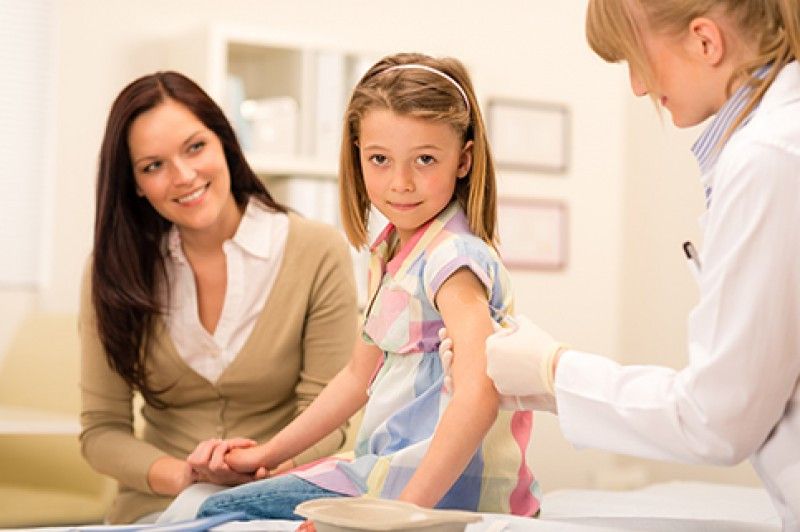Arthritis is commonly regarded, rightfully, as an aging-adult's disease, but the news becomes more sobering and even shocking with the realization that kids, too, also get arthritis. Per curearthritis.org, nearly 300,000 children 18 and under in America are afflicted with some form of arthritis. With July being Juvenile Arthritis Awareness Month, what better time to hammer home the message that many children have painful, even stiff joints, which is why they and their parents, once there is a diagnosis, seek effective treatments and medications. Kids as young as six months are being diagnosed with juvenile arthritis (JA). The most common form – affecting about 50,000 children – is what's known as juvenile idiopathic arthritis (JIA), an autoimmune disease that assaults the joints and limits the ability of that child's body to fight back. On top of that, consider that teens and younger children have immune systems that still aren't fully developed, which in effect lets down the body's guard when it comes to staving off JIA. Per theboneandjointcenter.com, swelling and stiffness in children's joints left untreated can lead to permanent damage. By the way, if you're curious (or even if you're not), the term "idiopathic" means that the cause isn't known, per webmd.com.
Juvenile Arthritis Signs and Symptoms
As ravaging a disease as arthritis is, it can often be difficult to spot and properly diagnose, especially in children. One thing to watch for, though, is a child who starts limping, even though he or she has not suffered any sort of recent injury from a mishap such as a sprained ankle or an inadvertent (?) kick to the knee. Here are other signs and symptoms to be on the lookout for, per curearthritis.org, with the realization that any one of these could also suggest a common illness such as a cold or the flu. If any concerns at all, take your child to his or her pediatrician to be checked out:- Joint pain
- Swelling
- Fever
- Stiffness
- Rash
- Tiredness (fatigue)
- Loss of appetite
- Inflammation of the eye
- Difficulty with normal life functions such as walking, dressing, or playing.
Tests and Diagnosis for JA
If your child is experiencing any, some, or all of the above-mentioned signs and symptoms, there are various tests that can be performed to either confirm or rule out that JA is involved. Per Mayo Clinic, the following blood tests and imaging scans are likely to be used:- Erythrocyte sedimentation rate (ESR). This measures how long it takes for your red blood cells to settle at the bottom of a tube filled with blood. An elevated rate can indicate inflammation and a possible sign of juvenile arthritis.
- C-reactive protein. Yet another blood test that checks for inflammation, using a different measurement than the ESR.
- Anti-nuclear antibody. The presence of these proteins, which originate in the immune system, could in turn indicate the presence of an autoimmune disease such as arthritis.
- Rheumatoid factor. This is an antibody at times present in the blood of children who already have JIA.
- Cyclic citrullinated peptide (CCP). Ditto the previous note; the CCP is another antibody that when present could indicate JIA.
- Imaging scans (x rays or magnetic resonance imaging [MRI]). Either of these can be used to rule out other conditions such as bone fractures, tumors, infections, or congenital defects. Such scans can also be later used, after a doctor's diagnosis, to check on bone development and to see if any joint damage has developed.
Treatments and Medications
In treating JA/JIA, health professionals will typically use an assortment of tactics to reduce or relieve pain and swelling, restore full range of movement, and ward off subsequent complications, the goal being to return the child to a pre-disease level of physical and social activity. Per Mayo Clinic, here are some medications and treatments commonly used to treat arthritis in children:- Nonsteroidal anti-inflammatory drugs (NSAIDs). These include medications such as ibuprofen, Advil, and Aleve, each of which is aimed to reducing pain and swelling.
- Disease-modifying antirheumatic drugs (DMARDs). These usually are prescribed when NSAIDs have been ineffective in relieving joint pain and swelling. Trexall is a commonly used DMARD for children.
- Biologic agents. This is a newer class of drugs, some of which can diminish systemic damage and stop joint damage; another type works to suppress the immune system. Examples of the former include Enbrel and Humira; the latter, Rituxan and Kineret.
- Corticosteroids. Use of these should be minimal and/or brief as they can obstruct normal growth and increase the risk of infection. These include prednisone, which is designed to alleviate symptoms until another drug takes effect.
- Therapy. This is mostly done in connection with medication treatment in which a physical therapist works with the child to help restore or at least maintain joint flexibility, range of motion, and muscle tone.
- Surgery. Only used rarely, usually in severe cases where a joint's position needs to be improved.
- Supplements. Used mostly to alleviate symptoms of juvenile arthritis, joint health supplements are separate from prescribed medications.

